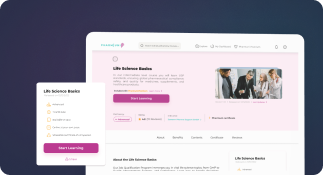Computer System Validation Example (CSV Example)
Definition
A Computer System Validation (CSV) Example refers to a documented, real-world instance or use case demonstrating how a computerized system is validated to ensure it meets its intended use within a regulated pharmaceutical or life sciences environment. This process ensures compliance with regulatory standards such as FDA 21 CFR Part 11, EU Annex 11, and GAMP 5.
CSV examples serve as practical tools for understanding how validation is implemented, offering insight into the validation lifecycle, including planning, testing, documentation, and maintenance of systems used in GMP-regulated activities.
Detailed Explanation
Purpose of a CSV Example
A CSV example helps illustrate how a company ensures that a computerized system performs reliably and consistently according to its intended use. In pharmaceutical and life sciences industries, where data integrity and patient safety are paramount, computer systems managing critical data must be validated to meet strict regulatory requirements.
Components of a CSV Example
A comprehensive CSV example typically includes:
- Validation Plan: Outlines the scope, responsibilities, and approach to validating the system.
- User Requirements Specification (URS): Defines what the system must do.
- Functional Specification (FS): Details how the system will meet the URS.
- Risk Assessment: Identifies potential risks and their mitigation strategies.
- Test Protocols: Includes Installation Qualification (IQ), Operational Qualification (OQ), and Performance Qualification (PQ).
- Traceability Matrix: Maps requirements to test cases to ensure complete coverage.
- Validation Summary Report: Summarizes the process and outcomes of the validation effort.
CSV Use Case: Laboratory Information Management System (LIMS)
Consider a pharmaceutical company implementing a Laboratory Information Management System (LIMS) to automate sample tracking and data reporting. The CSV process would involve:
- URS: The LIMS must support barcode scanning, audit trails, and secure user access.
- FS: Specifies how the barcode function is implemented and how audit logs are stored.
- IQ: Verifies that the LIMS software and hardware are installed correctly.
- OQ: Tests that user roles and access permissions function as intended.
- PQ: Uses real-world lab scenarios to ensure the system performs under normal operating conditions.
After successful validation, the LIMS can be released for production use, with ongoing monitoring and periodic review as part of the system’s lifecycle management.
Benefits of Reviewing CSV Examples
- Improves understanding of validation requirements and structure
- Facilitates training for QA, IT, and validation personnel
- Provides templates and benchmarks for future validation projects
- Supports audit readiness by demonstrating compliance practices
Common CSV Example Systems in Pharma
- Enterprise Resource Planning (ERP) systems
- Manufacturing Execution Systems (MES)
- Document Management Systems (DMS)
- Electronic Batch Record (EBR) systems
- Clinical Trial Management Systems (CTMS)
CSV Example Case Study: Electronic Document Management System (EDMS)
Scenario: A biotech firm deploys an EDMS to manage SOPs and GMP training records.
Validation Process:
- Developed a URS defining the need for version control and electronic signatures.
- Conducted risk assessment focusing on data integrity and user access.
- Performed IQ to verify software installation and server configuration.
- Executed OQ to test user roles, document workflows, and audit trail functionality.
- Ran PQ using actual SOP uploads and approval scenarios.
- Compiled a validation report and gained QA approval for system release.
This CSV example ensured that the EDMS complied with FDA 21 CFR Part 11 and supported audit readiness.



